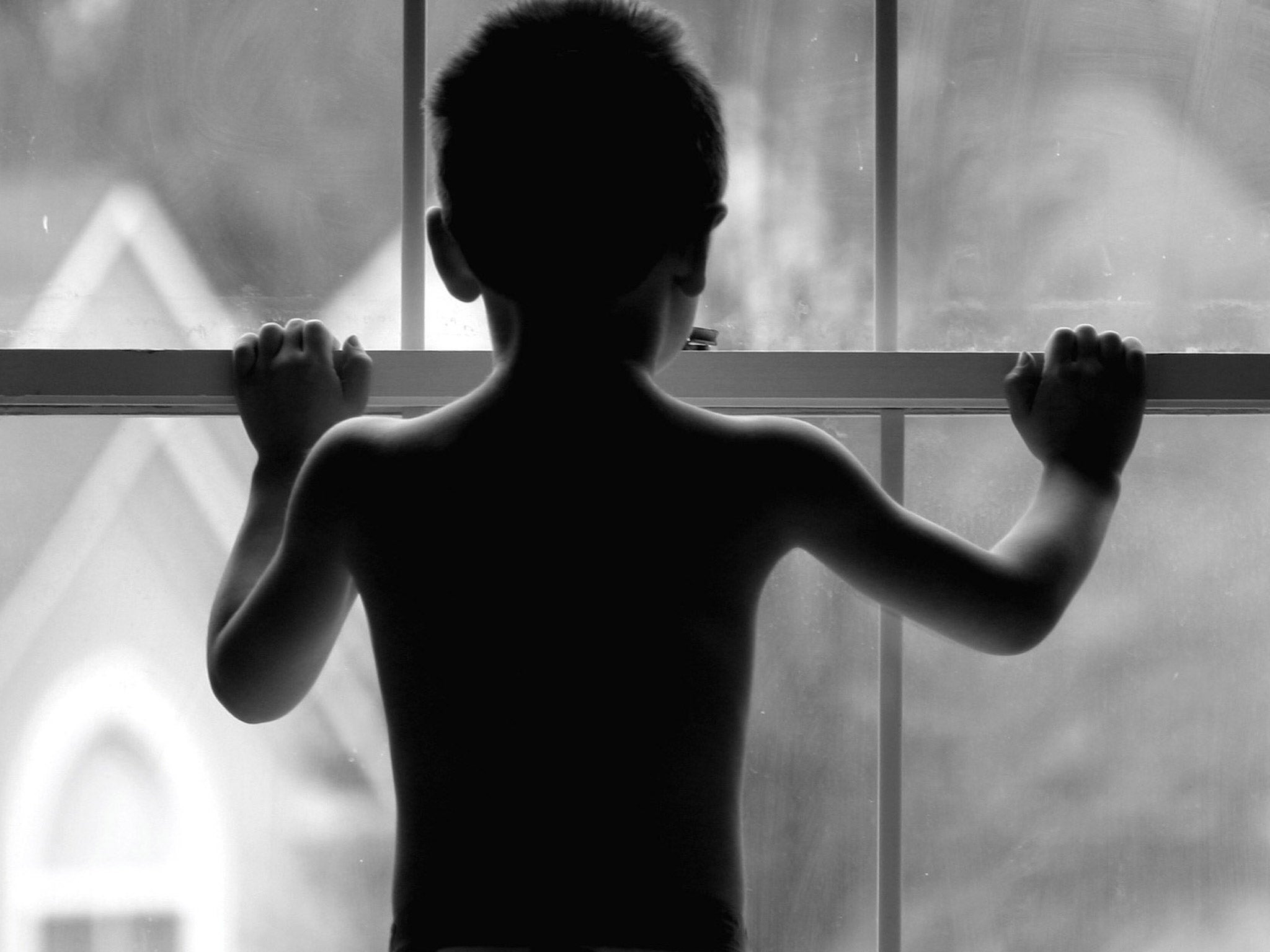The "moral entrepreneurs" who cash in on child abuse
Instead of listening to manipulative zealots, we need an inquiry into how we can make sure children are kept safe


I remember the weather, dank and overcast, and the equally grey severity of the Victorian Gothic town hall in central Middlesbrough.
And I recall the formal hush that settled over the crowded press benches as Dame Elizabeth Butler-Sloss – not yet a baroness – began to sum up the findings of her inquiry. Near me, I’m fairly sure, sat the writer Beatrix Campbell, who would publish a book – Unofficial Secrets – about the whole affair.
I certainly attended the release of the report into child abuse and its investigation in Cleveland that morning. But until I checked this week I could not have told you just which month this was – July 1988 – nor, without my long-forgotten articles in ancient stacks of Community Care magazine, much of what I then made of it.
Time inevitably blurs and blots the events of a quarter-century and more ago: not only who did what but who said what to whom, who knew and who did not, with every chain of knowledge and accountability eroded not by deception or conspiracy but by the rust of years.
Let us be clear: none of that is a reason for Lady Butler-Sloss, now 80, not to pursue with rigour her new investigation into public bodies’ response to historic child abuse. All the same, my Groundhog Day moment, as the distinguished family judge resumed her role as a Solomonic arbiter of dread, pain and guilt, also scooped other ideas back out of that clouded past.
Between 1986 and 1989, while on the staff of a weekly journal for social workers, probation officers and other welfare-state professionals, I went through a kind of intellectual baptism of fire in the seemingly endless abuse scandals and inquiries of that era.
The wave of outrage and concern had begun with reports into the physical maltreatment and then killing of children at home, such as (in the mid-1980s) Jasmine Beckford, Tyra Henry and Kimberley Carlile. Soon, sexual abuse had supplanted simple savagery as horror of the hour, with early rumbles crowned by the Cleveland paroxysm.
Those events led to 125 children being taken into care within five months during 1987, largely as a result of the “anal dilatation” test of abuse applied by paediatricians Dr Marietta Higgs and Dr Geoffrey Wyatt with the support of Cleveland’s child abuse consultant, Sue Richardson. By the time of the report, 98 had gone home. The key test proved, as fail-safe diagnoses always will, deeply flawed – which is not to say that some children removed had not been subject to assault within their homes. Others had not.
At that time, the vision of secretive circles of abusers in high places had not yet set the media salivating. Rather, the perceived peril lay within families, from incestuous fathers or feral stepfathers. Britain witnessed (depending on your belief system) either a wave of hysterical panic that broke up scores of innocent homes or a long-overdue illumination of the toxic secrets at the heart of the patriarchal family.
Later, “satanic” abuse organised by devil-worshipping sects took over as the headline nightmare in this modern demonology, with high-profile raids on families in Rochdale and Orkney. Those children were soon returned home. Accusations of “ritual” sexual violence made against their families proved to be part of a – literal, not metaphorical – witch-hunt.
The author of the government report that in 1994 not only dismantled the “satanic abuse” scare but also showed how it functioned as a sort of folk belief was Professor Jean La Fontaine of the London School of Economics. In that feverish period, I found her a dependable source of balance, reason and clarity. Yesterday, I talked again to the now-emeritus Professor La Fontaine, who later developed her research into a book, Speak of the Devil. “I was trained to think about these things in a different way, being an anthropologist,” she underlines.
She welcomes and applauds the climate of greater openness about abuse, our readiness to listen to the victims, and the refusal to condone or excuse any attack: “This is something that should help to protect young girls and women – and young boys too.”
Still, she raises doubts about the standard of evidence now applied in some prosecutions and the fuzziness of “child abuse” itself: “The term is now used as a shock-horror label.” Her investigations pinpointed the particular flaws in the “recovered memory” model of therapy, which purports to retrieve buried trauma from adults.
“Women who have been sexually assaulted when young do not forget about it. They may push it to the back of their mind, but they do not actually forget it.” And she warns that the obligation to believe children must not mean twisting accounts given in interviews to fit a pre-existing professional narrative, as happened in the “satanic abuse” cases. “I have found people interpreting what children said in terms of what they thought they ought to be saying.” Overall, Professor La Fontaine insists: “The change of attitude has been a positive one – but the constant dwelling on it may not be helpful.”
Tell that to the media, then or now. I can remember going for a job on a radio BBC programme (which I didn’t get), and soon realising that my sole interest to the producers lay in my alleged grounding in that most incendiary of hot topics, “CSA”: child sex abuse. By then, I had grasped that conscientious and compassionate doctors, social workers and psychotherapists could work for months and years with suffering children and their families without reaching the kind of definitive diagnosis that you might carry with confidence into a court of law.
Over case after case, I interviewed professionals, buried myself in reports, and tried to stay afloat in this clinging swamp of claim and counter-claim, theory and hypothesis, dogma and doubt. It was a minefield within a quagmire.
Many children had beyond doubt been subject to cruel and terrifying abuse – in Cleveland and elsewhere. Many others had not – or rather, the abuse had begun only when blundering authorities had snatched them from loving homes. To fathom the complete truth about the most bitterly disputed trials made the most esoteric paradoxes of a Derrida or a Foucault – the sort of thing had engaged me a few years earlier – look like, yes, child’s play.
What did I learn? First, to run a mile from abstract ideology when applied to family life. All the zealots got it wrong, whether the radical feminists for whom the term “abusive family” was a tautology or the blinkered traditionalists who exploded in rage at every official glance at the sacred domestic hearth.
Second, that to reconstruct a precise course of events from a few months back took heroic patience and circumspection, especially when that mission required interviews with vulnerable children. Overlay three decades of forgetting and the possibility – although we don’t yet know – of wilful obstruction, and the height of the mountain that looms in front of Butler-Sloss grows clear.
Third, that the interests of remedy and recovery do not always coincide with the judicial drive to make a case, to indict and to convict. The courtroom may not be the best or the only place in which to acknowledge, to halt and then to heal a child’s misery. Beware the call, rashly promoted by the NSPCC, for legally binding reports of “child abuse” – in effect, of any suspicion of any kind held by professionals who may only see one piece of the jigsaw of a young life.
I took other lessons away from that crazed period – though no crazier than the vista of endless retrospective frenzy that now beckons. Children could suffer terrible hurt and fear within families even if no one had laid a finger on them. Trauma might but need not arise from physical or sexual violence – a building block of Freud’s psychology, but one displaced by later schools of thought who saw it as a bulwark of patriarchy.
You may kill a child’s spirit without violating its body. Conversely, abused children can recover, given effective long-term care. To partner our revived Bronze Age creeds of unforgivable offence and eternal disgrace, we now lazily assume that nothing can ever wipe out the taint of early trauma. That is despairing nonsense. Healing does happen. But we have to train and fund sufficient people who command the skills to bring it about.
I gave up the abuse beat without much regret. As Nietzsche put it: “He who fights with monsters should look to it that he himself does not become a monster. And when you gaze long into an abyss, the abyss also gazes into you.” Behind the measured words of the reports, with their repetitive clichés about inter-agency co-operation and best professional practice, the pain felt too real and too raw. That pain came from wrongly accused parents and carers as well as from many cowed and brutalised youngsters. And I came to distrust the smug grandstanding of the permanently outraged, whatever their point on the ideological spectrum.
The folk whom that bracingly sceptical thinker Frank Furedi calls “moral entrepreneurs” have cashed in on abuse again, and will do so for numbing years to come. Can we now demand an overarching, judge-led enquiry into how British children today should lead safe and happy lives?
Join our commenting forum
Join thought-provoking conversations, follow other Independent readers and see their replies
Comments